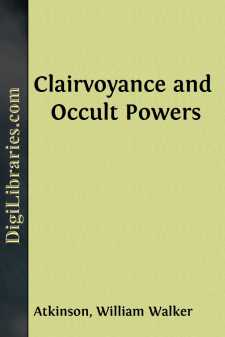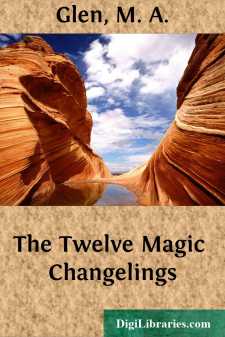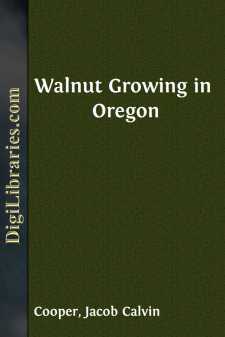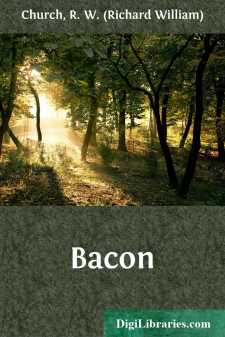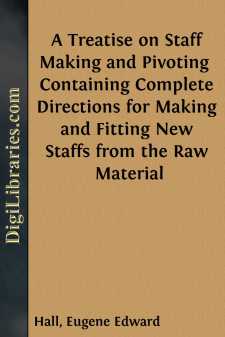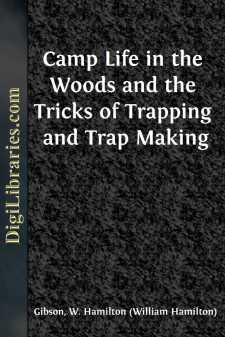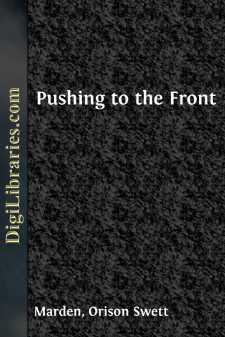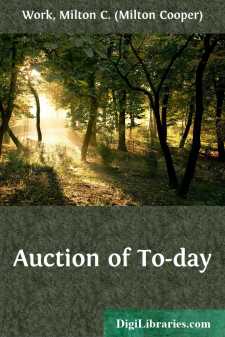Non-Classifiable
- Non-Classifiable 1768
Non-Classifiable Books
Sort by:
LESSON I. THE ASTRAL SENSES. The student of occultism usually is quite familiar with the crass individual who assumes the cheap skeptical attitude toward occult matters, which attitude he expresses in his would-be "smart" remark that he "believes only in what his senses perceive." He seems to think that his cheap wit has finally disposed of the matter, the implication being that the...
more...
A COMING INDUSTRY OF GREAT NATIONAL IMPORTANCE English walnuts for dessert, walnut confectionery, walnut cake, walnuts in candy bags at Christmas time—thus far has the average person been introduced to this, one of the greatest foods of the earth. But if the food specialists are heard, if the increasing consumption of nuts as recorded by the Government Bureau of Imports is consulted—in short, if...
more...
CHAPTER I. EARLY LIFE. The life of Francis Bacon is one which it is a pain to write or to read. It is the life of a man endowed with as rare a combination of noble gifts as ever was bestowed on a human intellect; the life of one with whom the whole purpose of living and of every day's work was to do great things to enlighten and elevate his race, to enrich it with new powers, to lay up in store...
more...
by:
Edward Edwards
INTRODUCTION None of the minor incidents in our naval history has inspired so many writers as the Mutiny of the Bounty. Histories, biographies and romances, from Bligh's narrative in 1790 to Mr. Becke's "Mutineers" in 1898, have been founded upon it; Byron took it for the theme of the least happy of his dramatic poems; and all these, not because the mutiny left any mark upon history,...
more...
CHAPTER I. To produce a good balance staff requires more skill than to produce any other turned portion of a watch, and your success will depend not alone on your knowledge of its proper shape and measurements, nor the tools at your command, but rather upon your skill with the graver and your success in hardening and tempering. There are many points worthy of consideration in the making of a balance...
more...
by:
William Hillary
The few pages of which the present edition is composed, were principally written under the circumstances there stated, which had forcibly called my attention to the fatal effects of those ever-recurring tempests, which scatter devastation and misery round our coasts, where the veteran commander and his hardy crew, with their helpless passengers of every age and station in life, are left wretchedly to...
more...
f all the various subjects in the catalogue of sports and pastimes, there is none more sure of arousing the enthusiasm of our American boys generally, than that which forms the title of this book. Traps and Trapping, together with its kindred branches, always have been and always will be subjects of great interest among boys, and particularly so to those who live in the country. It is a fact to be...
more...
FOREWORD This revised and greatly enlarged edition of "Pushing to the Front" is the outgrowth of an almost world-wide demand for an extension of the idea which made the original small volume such an ambition-arousing, energizing, inspiring force. It is doubtful whether any other book, outside of the Bible, has been the turning-point in more lives. It has sent thousands of youths, with renewed...
more...
INTRODUCTION With so many excellent textbooks now in circulation, it seems almost audacious to add another treatise to current card literature. It happens, however, that the game of Auction, or Auction Bridge, as it is generally called ("Auction Whist" is perhaps a more appropriate title), has been so completely and so suddenly revolutionized that books written upon the subject a few months ago...
more...


